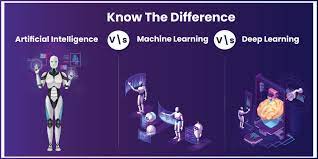Machine learning (ML) and artificial intelligence (AI) are prominent nowadays because they help computers and systems learn and make decisions automatically. This article is about how Machine Learning (ML) works and compares it to AI.
Without scripting, machine learning lets computers learn from data and experience and do specified jobs. Machine Learning models or algorithms make data-driven judgments or predictions.
The Machine Learning and AI Goals
Machine Learning and AI have different purposes, although being related. AI systems aim to produce machines that can efficiently do complicated human tasks. This exercise requires learning, problem-solving, and pattern identification.
Machine Learning aims to examine enormous volumes of data. These tools utilize statistical modeling to find data trends and estimate probability or confidence levels.
Machine Learning and AI
There are many ways to solve difficulties. These methods include genetics, neural networks, deep learning, search algorithms, rule-based systems, and machine learning.
Supervised and unsupervised machine learning approaches exist. Supervised learning solves problems with labeled input and output data. Unsupervised explores untable data for hidden patterns.
The implementation of machine learning and AI
Two tasks are typical for machine learning and AI. First, choose and prepare the model training dataset. Second, pick a machine learning model like linear regression or decision trees.
The training model receives essential data features from data scientists. They update the Dataset with new data and error checking. High-quality and diverse data improves machine learning model accuracy.
However, building AI goods is complicated, thus many people choose pre-built AI solutions to reach Common aims. After years of research, developers integrate AI solutions into goods and services via APIs.
Machine Learning/AI Needs
Machine Learning training requires several hundred data points. Additionally, Machine Learning demonstrations demand enough computational power. A single or small group of servers may be enough for the application and use case.
However, infrastructure needs for other intelligent systems vary by task and computational analysis method. Turnkey AI and machine learning solutions are available for compute-intensive use cases that require thousands of machines to fulfill difficult goals. API integration requires no additional resources.
Key Differences Between Machine Learning and AI
Artificial Intelligence and Machine Learning analyze large amounts of data using statistical modeling to solve complex tasks efficiently. These methods include genetic algorithms, neural networks, and deep learning, which requires training data and computing power. Data scientists can develop solutions using existing algorithms. Predefined solutions can be integrated into goods and services using API.
Conclusion
Machine learning and artificial intelligence let computers and systems learn and make judgments automatically in the ever-changing world of technology. Despite their similarities, the two have different purposes, techniques, implementation, and requirements. Understanding machine learning lets you make smart choices.
